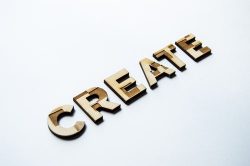Creating Innovation: A Recipe for Innovation Stew
August 20, 2018 Written by: W.B. “Bud” Kirchner
Read Time: Approx. 7 minutes
“The moment of truth, the sudden emergence of a new insight, is an act of intuition. Such intuitions give the appearance of miraculous flushes, or short-circuits of reasoning. In fact, they may be likened to an immersed chain, of which only the beginning and the end are visible above the surface of consciousness. The diver vanishes at one end of the chain and comes up at the other end, guided by invisible links.”
– Arthur Koestler
Introduction
I am often intimidated by the challenge of translating complicated subject matter into very few words and simplifying it to make it more understandable. Therefore, I have chosen a “recipe” metaphor for this article because I believe there is no single component to innovation. With the right ingredients and assembly of those ingredients (allowed to cook together if you will), the outcome is worth the effort. Who wouldn’t want a delicious innovation stew?
I have also decided to approach this article from a behavioral point of view, followed by neuroscience in the next, with both cases translating where possible into a “business” context.
Choosing a ‘Dish’
Let’s assume our appetite is calling for a change. We can focus on a couple of dishes – creativity or innovation. In order to make a choice, let’s start with the operational definition according to Drew Marshall (There’s A Critical Difference Between Creativity And Innovation):
- “The main difference between creativity and innovation is the focus”
- “Creativity is about unleashing the potential of the mind to conceive new ideas”
- “Creativity is subjective, making it hard to measure, as our creative friends assert”
- “Innovation, on the other hand, is completely measurable”
- “Innovation is about introducing change into relatively stable systems”
Put another way “We like to think of an organization’s capacity for innovation as creativity multiplied by execution. We use “multiplication” rather than “sum” because, if either creativity or execution has a score of zero, then the capacity for innovation is zero.” – Vijay Govindarajan
The Main Ingredients
Continuing with our metaphor, let’s imagine that creativity is marinated with intuition and insight to produce innovation.
Recipe
“Advances are made by answering questions. Discoveries are made by questioning answers.” – Bernard Haisch
“Additional ingredients” for our stew are found in this (highly) edited list from “Thirteen traits of a truly innovative organization” – Luke Johnson
- Often chance plays a major part in the making of new discoveries
- Openness to suggestions: accidents can breed quantum leaps
- Advances are generally made by groups, rather than lone geniuses
- Kaizen: a Japanese management theory which promotes continuous improvement
- Enhancements are likely to be incremental rather than radical
- The objective is application, not theory
- Now more nimble, dispersed groups are likely to come up with fresh insights and developments
- Recruiting and retaining the brightest is the most important ingredient
- Lavish budgets do not necessarily guarantee better results
- A sense of urgency matters but a long-term perspective is paramount
- Dead ends are inevitable. They must never be seen as defeats, merely temporary setbacks
For those wanting to spend some time in the weeds – I recommend:
- Seeing What Others Don’t: The Remarkable Ways We Gain Insights by Gary Klein
- The Eureka Factor: Aha Moments, Creative Insight, and the Brain by John Kounios and Mark Beeman
Condiments
Like any good recipe, we can “customize” the ingredients to reflect circumstances.
The following (in no particular order) reflects what we at Kirchner Group add to the mix in order to savor innovation:
- Concept
- We do what we can to create an “emergent” phenomenon – how can we make the sum greater than the parts?
- Organic
- We feel an organization is most innovative when it is organic (think ecosystem). Sill, we see ourselves as part of a broader (bigger) ecosystem that is our business and social (moral) context. We like to think of ourselves as a “keystone species”.
- Motivation
- We try to capture the concept of autonomy/purpose by allowing our team to set up in a distributed (location) model. We are all compensated on a “direct drive” model. People tend to get involved on projects that interest them, participate economically (and democratically) with their colleagues – each dependent on their value proposition. Data suggest this can broaden the ‘thinking spectrum’.
- Positioning
- We believe (consistent with chaordic theory) as described by Dee W. Hock that the best things happen at the interface of order and chaos – so we have very few rules. We rely on common sense and common objectives.
- Synchronicity
- Our cardinal rule and, unfortunately, are often forgotten in financial services groups is that there must always be an alignment of economic interest. Human nature being what it is – if someone can benefit at the expense of someone else they almost always will.
- Distributed
- We have our people working in numerous geographic locations. Initially, (and still) this is about being close to our clients/customer/ partner. This has become particularly relevant for us since we have no junior people so our ability to attract world class (senior) people by not asking them to uproot their family (no teenager wants to leave their friends!)
- Inspiration
- We try to only accept mandates that make us proud (sometimes in contrast to make us rich)
- Creativity
- Ability to reinterpret something by breaking it down to its elements and reassembling while avoiding pitfalls such as “functional fixedness”
- Culture
- We have developed a model centered on ‘earning and returning’ that reinforces our priorities for internal and external audiences
Accompaniments
“Like great writers – Innovators cut the adverbs.” – Shane Snow
Innovation is most often enjoyed when served with:
- Appropriate motivations
- Roles that reflect autonomy and purpose
- The right balance of motivation
- Meaning
- Appropriate compensation models
Don’t serve with:
- Hierarchies
- Hidden agendas
- Risk aversion
The Proof is in the Eating
“If you want to build a ship, don’t drum up people to collect wood and don’t assign them tasks and work, but rather teach them to long for the endless immensity of the sea.” – Antoine De Saint Exupery
Having put this much thought and effort into our innovation stew at Kirchner Group, we are constantly ‘taste-testing’ the outcome. I like to think the long distinguished corporate history of our firm is a confirmation that the recipe works, but requires constant tweaking.
The following is some of the evidence to this effect:
First and foremost, we have been in business for 30 years in an industry where 30 months as a boutique puts you in the Guinness Book of World Records. Companies that succeed regardless of their competition do so by being innovative.
Kirchner Group has a long history of innovation across everything we do. In finance, Kirchner Group developed a series of innovative proprietary investment strategies and reorganization models. In education, we established the first of its kind hands-on learning experience for capital allocation through direct investments with the Kirchner Food Fellowship program.
In health, we acted as advisors on diligence to the founding investor in two of the largest biotech Series ‘A’ funding’s ever – Juno Therapeutics ($120M) and Denali Therapeutics ($217M). Even in philanthropy, we pioneered a model to help leverage community involvement and support to enable more people to benefit from the programs. Also, on the leading edge of innovative research through a collaboration with a Harvard initiative focused on research with premature infants and multi-sensory stimulation.
This is just a small sample of our innovation that is by no means intended to be self-serving but rather another illustration.
“One of the most experienced and visionary investors/advisors/thought leaders in the innovation space in general and particularly in the agribusiness sector and health sectors.” – Alison Nankivell Vice President, Global Expansion Business Development Bank of Canada/Export Development Canada
Conclusion
Like most great recipes, innovation is as much an art as it is a science. I have attempted to give you some insight to both through a real-world example – food.
In closing, you can get some empirical perspective on this phenomenon by reading “What Was the Greatest Era for Innovation? A Brief Guided Tour” by Neil Irwin.
Bibliography
- Vijay Govindarajan – Innovation is Not Creativity
- Dee W. Hock – Birth of the Chaordic
- Neil Irwin – What Was the Greatest Era for Innovation? A Brief Guided Tour
- Luke Johnson – Thirteen traits of a truly innovative organization
- Gary Klein – Seeing What Others Don’t: The Remarkable Ways We Gain Insights
- John Kounios, Mark Beeman – The Eureka Factor: Aha Moments, Creative Insight, and the Brain
- Drew Marshall – There’s A Critical Difference Between Creativity And Innovation
Relevant Business Brain Model articles
- This Article Will Give You Something to Chew On
- How Embodied Is Your Cognition?
- TPN vs. DMN: Neural Mechanisms and Mindfulness
- Passion: Part Two – How to get Intimate with Your Passion
- Part 2 – Lo-Tech: Augmented Cognitive Performance
- Don’t we have anything better to do with our time?
- Is There Something Wrong with Our Wiring?
- Business vs. Science: Are you losing this fight?
- Financialization As A Symptom
About the Author: W.B. “Bud” Kirchner is a serial entrepreneur and philanthropist with more than 50 years of business success. He is not a scientist or an academic but he does have a diversified exposure to neuroscience, psychology and related cognitive sciences. Generally speaking, the ideas he expresses here are business-angled expansions of other people’s ideas, so when possible, he will link to the original reference.



